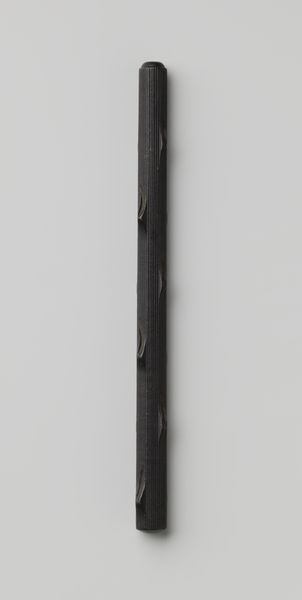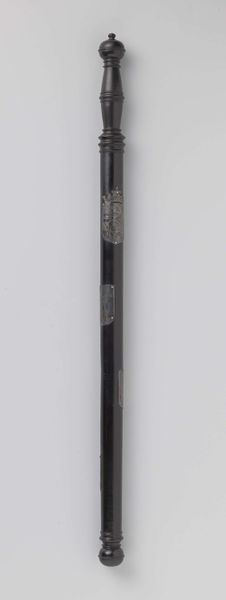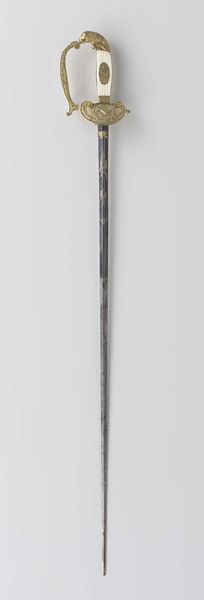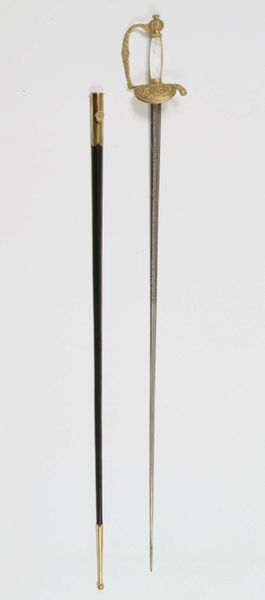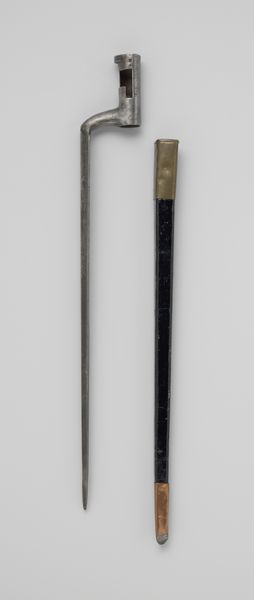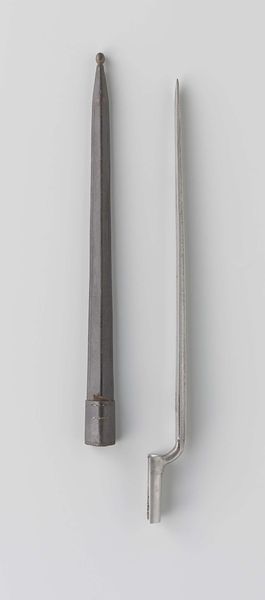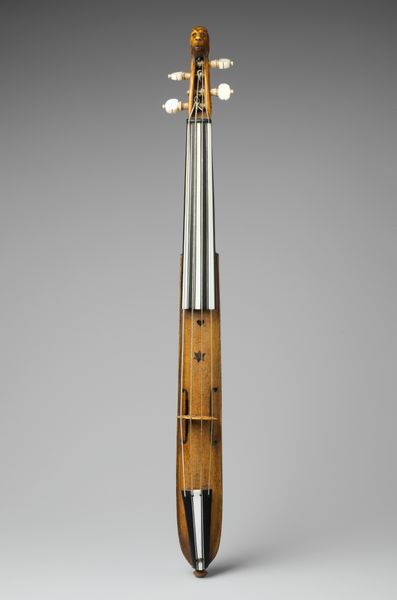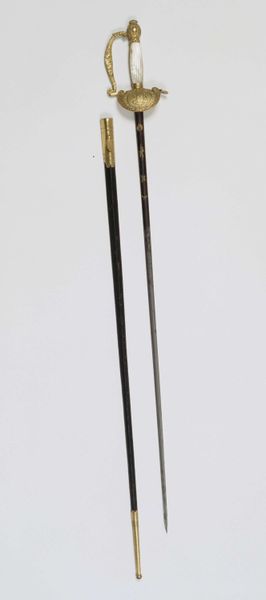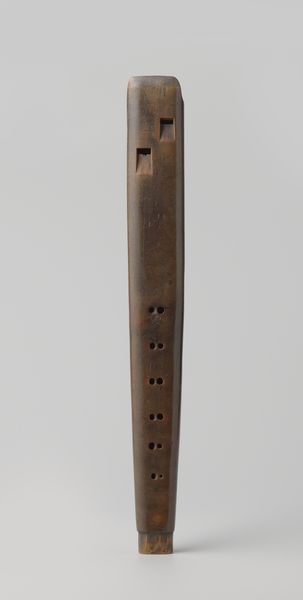
metal, photography, wood
#
metal
#
form
#
photography
#
line
#
wood
#
musical-instrument
Dimensions: Total length: 39.9 cm (15-3/4 in.) Embouchure: 9.2 x 8.7mm Center embouchure to end: 306mm Bore diameter: 10.8mm Hole diameter: 5.7mm Distance from embouchure center to center B: 134mm A: 156mm G: 177mm F: 201mm E: 224mm D: 249mm
Copyright: Public Domain
Curator: Here we have what is cataloged as a "Fife," dating roughly between 1800 and 1850, currently residing here at The Metropolitan Museum of Art. Editor: My initial impression is the exquisite linear form. There is an intentionality to the craft. I imagine a single artisan meticulously carving the bore to produce sound and employing metal ends to enhance the visual aesthetic of the finished product. Curator: It's fascinating to think about the role the fife played in early 19th-century society. One could picture military use or the role in shaping patriotic fervor and popular culture of the period. Editor: The type of wood is a material choice indicative of a specific class. Rosewood versus fruitwood gives two different social readings depending on what a person selects to build something functional such as a fife from that moment. Even the metal usage. Gold is far different than something with tinnier properties or qualities. Curator: Absolutely, considering the social history gives this object meaning, a context of access and musical engagement. And I think the fife, because of its smaller size, was readily accessible; compared to say, something like an organ. So its potential audience broadens too. Editor: But what about who’s manufacturing it? Did craftspeople benefit from the dissemination of art instruments or was that even something considered in the time frame, or was their work uncredited and undervalued. Curator: That is a salient question. The fife speaks volumes about how music permeated life. The role and legacy, though often overlooked, continue to inspire how groups use this particular flute and the historical settings which resonate with contemporary political aspirations. Editor: It’s striking to realize an instrument like this represents material labor and human breath to create a lasting physical object for generations after it was formed. Thank you for illuminating what materials, labor, and intent are hidden in simple designs.
Comments
No comments
Be the first to comment and join the conversation on the ultimate creative platform.
